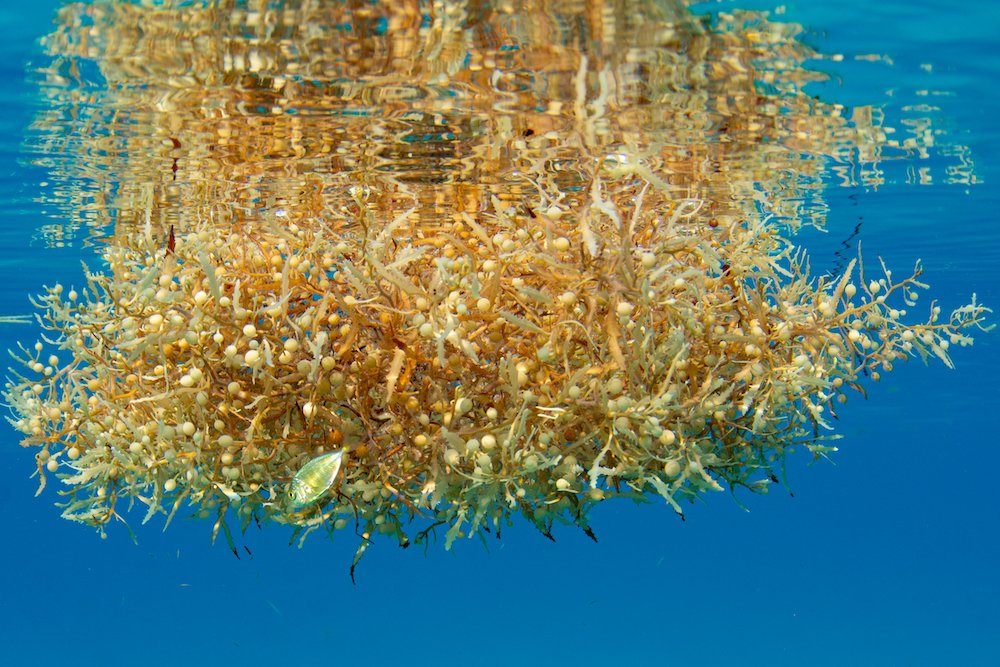Trouble in Paradise
Have you heard of sargassum? It’s the yellowish, brown seaweed that floats in large mats on the ocean’s surface and washes up on beaches. Sargassum provides vital habitat for many animals like tiny crabs and baby sea turtles from predators like tuna and marlin. But, too much of it is a bad thing and right now, a giant blob is headed for Florida.
In fact, “the Sargassum is already arriving,” said Brian Lapointe, Ph.D., research professor at Harbor Branch Oceanographic Institution who lives in the Florida Keys. “Very early arrival this year and more is coming.”
Sargassum seaweed drifts along the currents of the open ocean and accumulates in the Sargasso Sea, a region of the Atlantic Ocean bounded by four currents rather than land. Typically, it starts washing up on beaches from March to October due to ocean currents. In some places in the Caribbean, it began showing up in January and February.
According to Lapointe, increasing nutrients from rivers including the Amazon and Orinoco in South America, as well as the Mississippi, leads to giant blooms of the seaweed. The Sargassum strips the oxygen out of the water causing dead zones and it can entangle marine mammals, like dolphins. When the seaweed lands on the beaches, it smothers sea turtle nesting sites. Sargassum is now considered the world’s largest algae bloom.
The stinky, rotting seaweed on the beach isn’t particularly pleasant for humans either. After about 48 hours, it begins to release hydrogen sulfide and ammonia that can irritate eyes, ears, and noses.
This year, scientists estimate a 5,000-mile-wide blob of the brown seaweed based on NASA satellite imagery. With climate change and continued nutrient pollution, the problem isn’t going anywhere. The seaweed will keep coming.
Follow me on Instagram: @BethanyAuglirere
To view more of my work: www.bethanyaugliere.com
Written by Bethany Augliere // Photography by Bethany Augliere and Brian Lapointe


